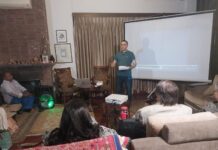While discussing labour movements in Pakistan, people tend to over-simplify the movement of 1972. A case in point is the article ‘Labour movements’ (April 27) which talked about the workers’ struggle, and painted it in a negative light by stating that some mill owners were publicly humiliated, and 10 workers lost their lives due to police gunfire.
The narrative overlooked the significance of the struggle of the workers and its true context. The 1972 labour movement was a crucial turning point in Pakistan’s labour history. It was the end result of the struggles that had been initiated by students and workers with leftist leanings against Ayub Khan in the late 1960s, and which had led to the formation of the Pakistan People’s Party (PPP).
Workers under the banner of the PPP had played a decisive role in the resto- ration of democracy in the country. The workers had high expectations of the government, hoping that it would force the industrial elite to accept all their demands.
The workers intensified their struggle, leading to regular lockouts and sieges of industrial units in Karachi’s two major industrial areas during the first six months of 1972.
The workers demanded the reinstatement of those who had been sent packing during the martial law, the opening of industries that were closed by employers without giving the employees any notice or compensation, and the distribution and payment of bonuses as part of the employee participation fund. Besides, the workers asked for the payment of overdue amounts under certain heads.
These elements provided the backdrop for the 1972 labour movement in Karachi’s SITE area, which had a violent ending. As noted by Kamran Asdar Ali in his article ‘The Strength of the Street Meets the Strength of the State: The 1972 Labour Struggle in Karachi’ (International Journal of Middle East Studies 37, No. 1 [2005]: 83-107), the government of the time used the brutal force of the state to repress the movement.
In response to state repression, the workers showed solidarity with their leaders, leading to the closure of more than 900 units. Employees waving their red-and-black flags were seen waving at nearly every factory across Karachi. Its impact was felt throughout the country, with workers going on strike at many factories in Hyderabad and other cities.
In Punjab, union leaders organised a protest march, and their offices hoisted black flags to show solidarity with their comrades in Karachi. However, the workers’ leaders soon divided, and the movement was crushed.
Kamran noted that the government not only suppressed radical movements, but also sought to restructure the working class according to its own vision of dependent politics. The movement organised the labour class on wider agendas, but the military regime that ousted the government resorted to even worse violent tactics to repress the movement, and some right-wing trade unions played their part in the repression of leftist voices.
It was also alleged at the time that the workers’ union in Pakistan Railways had received financial assistance from the erstwhile Soviet Union. Dada Amir Haider, in his memoirs, Chains to Lose: Life and Struggles of a Revolutionary, has noted that leftists had always been accused of receiving “the Moscow gold”.
He wrote a whole chapter in his memoirs on the economic plight of the founding members of the labour movement and party workers.
It appears that those spreading such allegations were using the filter of socialism and communism, as depicted by Noam Chomsky in his propaganda model, to present the struggle of left-wing workers in a negative light.
It is essential for all concerned to understand the historical context and significance of the labour movement in Pakistan, and not to oversimplify the many complexities the movement faced in different phases of national history.
AAMIR RAZA
ISLAMABAD
The leftists and the labour movement
Must Read
Prince Harry’s ‘Secret Weapon’ To Bring Meghan Markle Back To UK...
Prince Harry in convincing Meghan Markle to return to his home country and Ellen DeGeneres and Portia de Rossi’s recent move to the UK...






















